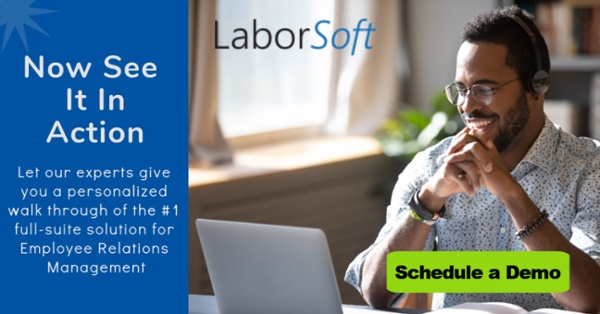Navigating Federal and State Parental Leave Laws
Read Time 7 mins | Jul 29, 2025 | Written by: LaborSoft

The continually moving goalposts of parental leave regulations and policies present a growing compliance challenge for HR professionals across the United States. While the federal Family and Medical Leave Act (FMLA) sets the baseline, many states have enacted their own laws. Each state could have individual nuances that expand leave rights, mandate pay, or adjust eligibility requirements vs. the federal baseline.
For HR teams, compliance with this tangled nest of local and nationwide standards can become an employee relations management migraine. Nonetheless, it takes perfect compliance to avoid claims and maintain the trust of your workforce. Explore some of the key federal requirements, state-level variations, and best practices for tracking leave and maintaining compliance across your organization.
FMLA: The Federal Baseline
The Family and Medical Leave Act (FMLA) provides up to 12 weeks of unpaid, job-protected leave to eligible employees for qualifying family and medical reasons, including:
- The birth and care of a newborn child
- Placement with the employee of a child for adoption or foster care
- Caring for a spouse, child, or parent with a serious health condition
- A serious health condition that makes the employee unable to perform their job
Eligibility Requirements:
To qualify for the leave time that’s provided in the FMLA, employees must meet certain criteria, including:
- Work for a private employer with 50 or more employees within a 75-mile radius
- Have worked for the employer for at least 12 months (not necessarily consecutive)
- Have logged at least 1,250 hours of service during the 12 months prior to leave
Key Protections Under FMLA:
Certain rules are in place to protect the jobs and essential benefits of employees during their time away from work, such as:
- Continuation of group health benefits during the leave period
- Job protection, ensuring the employee can return to the same or an equivalent role
- Prohibition of retaliation for taking or requesting FMLA leave
While FMLA provides a critical foundation, its protections are also limited by two key factors: first, that the leave is unpaid, and second, that it only applies to larger employers. These gaps are often where state laws come into play.
How State Parental Leave Laws Expand Benefits
Several states have introduced paid parental leave programs that either supplement FMLA or extend benefits to employers and employees not covered by federal law. Below are some examples of local programs in the states of California, New York, New Jersey, and Massachusetts (considered some of the most impactful such programs).
California |
California’s Paid Family Leave (PFL) provides up to eight weeks of partial wage replacement to employees who take time off to bond with a new child. It also offers separate protections under the California Family Rights Act (CFRA), which mirrors and expands FMLA coverage. |
New York |
New York’s Paid Family Leave (PFL) law allows up to 12 weeks of paid leave to bond with a new child, care for a seriously ill family member, or assist during a family member’s military deployment. It applies to most private employers, regardless of size. |
New Jersey |
Under the New Jersey Family Leave Act (NJFLA) and the Temporary Disability Benefits Law, eligible employees can receive up to 12 weeks of job-protected leave and cash benefits for bonding with a newborn or adopted child. |
Massachusetts |
The Massachusetts Paid Family and Medical Leave (PFML) program offers up to 12 weeks of paid family leave and includes robust job protection measures. It covers employers with as few as one Massachusetts employee. |
These sorts of state-level benefits can certainly vary in terms of leave duration and payment amounts. They’ll also differ in funding models. Some use payroll contributions from employees, while others involve shared contributions from employers.
The Compliance Challenge: Coordinating FMLA & State Leave
HR professionals have to find a way to thread the needle between parental leave laws across multiple jurisdictions and align federal and state leave laws. This presents a unique set of compliance risks. Employers of course have to make sure they’re offering the correct type (and amount) of leave, but they’ve also got to track entitlements in a way that avoids overuse or underuse.
For example, in states with both FMLA and state-level paid leave, the leaves may run concurrently or consecutively. This will depend on how the state’s individual laws are written and how an employer’s internal policy is structured. HR teams must therefore stay alert to:
- Differences in eligibility (e.g., company size, employee tenure)
- Variations in notice requirements or forms
- Whether the leave is paid, unpaid, or partially paid
- How the leave interacts with short-term disability or PTO policies
Failure to properly administer leave under overlapping regulations can result in lawsuits, fines, or employee grievances. Systems for HR case management and employee relations tracking are, increasingly, necessary for HR success at SMBs that operate across multiple states.
Why Documentation and Tracking Matter
Beyond offering the leave itself, HR teams must maintain clear and compliant documentation to prove adherence to both FMLA and state-specific laws. This includes:
- Leave requests and supporting documentation
- Notices of eligibility and rights under applicable laws
- Dates of leave usage and return-to-work plans
- Records of benefit continuation and communications
Accurate records provide protection in the event of an employee claim, Department of Labor audit, or discrimination lawsuit. Whether the issue involves denial of leave or failure to reinstate an employee after parental leave, HR needs to demonstrate that decisions were made based on clear, documented criteria.
Modern employee relations software and HR case management tools help organizations track these variables efficiently and reduce the risk of administrative errors.
Tips for Staying Compliant With Parental Leave Laws
- Audit Your Current Policy: Make sure your parental leave policy aligns with the requirements of the FMLA and all applicable state programs. Consider how you treat paid time off and whether existing policies might unintentionally discriminate or confuse.
- Train HR Staff and Managers: Ensure that all team members handling leave requests are trained in both federal and state-level leave regulations. Supervisors should know how to respond to leave requests without violating an employee’s rights.
- Use a Centralized System: An employee and labor management platform empowers your team to clearly and easily document employee interactions, track deadlines, and generate reports across locations. A comprehensive cloud-based system can also dramatically reduce the risk of missed steps.
- Review Your Arbitration and Return-to-Work Processes: Consider how parental leave intersects with return-to-work policies, performance evaluations, and potential grievances. Employers that treat return-to-work cases inconsistently can invite claims of retaliation or discrimination.
- Stay Up to Date: State laws change frequently, and new trends and proposals are introduced every year. Regularly monitor legislative changes — or work with employment counsel — to ensure your policy stays compliant.
Supporting a Compliant and Equitable Leave Culture
Parental leave is a matter of employee experience, equity, and long-term engagement as much as it is a compliance issue. Employees naturally need to feel supported during life transitions like welcoming a new child. If they do, they’re more likely to return to work committed and productive.
Organizations can build a proactive parental leave policy with both the law and the employee in mind to position themselves to best attract talent and reduce turnover while minimizing hefty legal risks.
LaborSoft offers configurable tools to support these efforts. Our cloud-based platform helps with documenting leave cases, communicating with employees, and keeping all instances of leave in alignment with state and federal guidelines. Explore our employee relations software to see how we help organizations streamline FMLA and state leave compliance with a modern, cloud-based platform.


